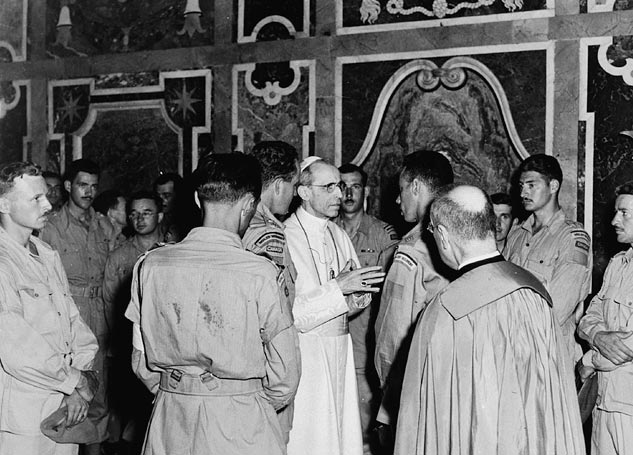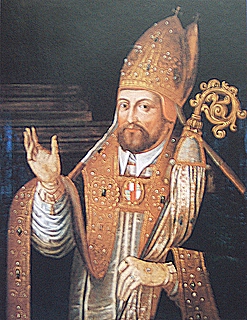|
House Of Aufseß
The Aufseß family, sometimes spelt Aufsees and Aufsess, is a Franconian noble family of Barons. The original family seat was at Unteraufseß castle in Aufseß, Upper Franconia. Members of this family held important Roman Catholic Church posts in Bamberg. Notable members *Jobst Bernhard von Aufsees German Wiki, Jobst Bernhard von Aufsees (28 March 1671 – 2 April 1738), also known as ''Jodocus'', canon of Bamberg and Würzburg, was born in Mengersdorf. He was baptized as a Lutheran but educated as a Roman Catholic and was later the founder of the Aufseesianum in Bamberg. *Friedrich III von Aufseß was Prince-Bishop of Bamberg from 1421 to 1431. *Hans von und zu Aufseß was a baron and the principal founder of the ''Germanisches Nationalmuseum'' (formerly the ''"Germanischen Museums"'') in Nuremberg. Properties of the Aufseß family File:Aufseesianum in Bamberg.JPG, Jobst Bernhard von und zu Aufsees was the founder of the Aufseesianum in Bamberg File:Mengersdorf.jpg, Ma ... [...More Info...] [...Related Items...] OR: [Wikipedia] [Google] [Baidu] |
Freiherr
(; male, abbreviated as ), (; his wife, abbreviated as , ) and (, his unmarried daughters and maiden aunts) are designations used as titles of nobility in the German-speaking areas of the Holy Roman Empire, the Austro-Hungarian Empire and in its various successor states, including Austria, Prussia, Bavaria, Liechtenstein, Luxembourg, etc. Traditionally, it denotes the titled rank within the nobility above ' (knight) and ' (nobility without a specific title) and below ' ( count or earl). The title superseded the earlier medieval form, '. It corresponds approximately to the English baron in rank. The Duden orthography of the German language references the French nobility title of ''Baron'', deriving from the Latin-Germanic combination ''liber baro'' (which also means "free lord"), as corresponding to the German "Freiherr"; and that ''Baron'' is a corresponding salutation for a ''Freiherr''. Duden; Definition of ''Baron, der'' (in German)/ref> ' in the feudal system The title ... [...More Info...] [...Related Items...] OR: [Wikipedia] [Google] [Baidu] |
Aufseß
Aufseß, also sometimes spelled Aufsess, is a municipality in the district of Bayreuth in Bavaria, Germany. Located in Franconian Switzerland on the Castle Road and the Franconian ''Bierstraße'', or Beer Road, Aufseß is best known for its connection with the noble family of Aufsess, Knights of the Empire. Notable members of the family include Jobst Bernhard von und zu Aufsees, the founder of the Aufseesianum in Bamberg, Friedrich III von Aufseß, Prince-Bishop of Bamberg (1421–1431), and Hans von und zu Aufseß, who in 1852 was the principal founder of the ''Germanisches Nationalmuseum'' (formerly the ''"Germanischen Museums“'') in Nuremberg Nuremberg (, ; ; in the local East Franconian dialect: ''Nämberch'' ) is the Franconia#Towns and cities, largest city in Franconia, the List of cities in Bavaria by population, second-largest city in the States of Germany, German state of Bav .... References External links * * Bayreuth (district) {{Bayreuthdi ... [...More Info...] [...Related Items...] OR: [Wikipedia] [Google] [Baidu] |
Upper Franconia
Upper Franconia (, ) is a (administrative 'Regierungs''region 'bezirk'' of the state of Bavaria, southern Germany. It forms part of the historically significant region of Franconia, the others being Middle Franconia and Lower Franconia, which are all now part of the German Federal State of Bayern (''Bavaria''). With more than 200 independent breweries which brew approximately 1000 different types of beer, Upper Franconia has the world's highest brewery-density per capita. A special Franconian beer route (''Fränkische Brauereistraße'') runs through many popular breweries. Geography The administrative region borders on Thuringia (''Thüringen'') to the north, Lower Franconia (''Unterfranken'') to the west, Middle Franconia (''Mittelfranken'') to the south-west, and Upper Palatinate (''Oberpfalz'') to the south-east, Saxony (''Sachsen'') to the north-east and the Czech Republic to the east. History After the founding of the Kingdom of Bavaria the state was totall ... [...More Info...] [...Related Items...] OR: [Wikipedia] [Google] [Baidu] |
Roman Catholic Church
The Catholic Church (), also known as the Roman Catholic Church, is the List of Christian denominations by number of members, largest Christian church, with 1.27 to 1.41 billion baptized Catholics Catholic Church by country, worldwide as of 2025. It is among the world's oldest and largest international institutions and has played a prominent role in the history and development of Western civilization.Gerald O'Collins, O'Collins, p. v (preface). The church consists of 24 Catholic particular churches and liturgical rites#Churches, ''sui iuris'' (autonomous) churches, including the Latin Church and 23 Eastern Catholic Churches, which comprise almost 3,500 dioceses and Eparchy, eparchies List of Catholic dioceses (structured view), around the world, each overseen by one or more Bishops in the Catholic Church, bishops. The pope, who is the bishop of Rome, is the Papal supremacy, chief pastor of the church. The core beliefs of Catholicism are found in the Nicene Creed. The ... [...More Info...] [...Related Items...] OR: [Wikipedia] [Google] [Baidu] |
Bamberg
Bamberg (, , ; East Franconian German, East Franconian: ''Bambärch'') is a town in Upper Franconia district in Bavaria, Germany, on the river Regnitz close to its confluence with the river Main (river), Main. Bamberg had 79,000 inhabitants in 2022. The town dates back to the 9th century, when its name was derived from the nearby ' castle. Cited as one of Germany's most beautiful towns, with medieval streets and buildings, the old town of Bamberg with around 2,400 Timber framing, timber houses has been a UNESCO World Heritage Site since 1993. From the 10th century onwards, Bamberg became a key link with the West Slavs, Western Slavic peoples, notably those of Poland and Pomerania. It experienced a period of great prosperity from the 12th century onwards, during which time it was briefly the centre of the Holy Roman Empire. Holy Roman Emperor, Emperor Henry II, Holy Roman Emperor, Henry II was buried in the old town, alongside his wife Cunigunde of Luxemburg, Kunigunde. The town' ... [...More Info...] [...Related Items...] OR: [Wikipedia] [Google] [Baidu] |
Würzburg
Würzburg (; Main-Franconian: ) is, after Nuremberg and Fürth, the Franconia#Towns and cities, third-largest city in Franconia located in the north of Bavaria. Würzburg is the administrative seat of the Regierungsbezirk Lower Franconia. It spans the banks of the Main (river), Main river. Würzburg is situated approximately 110 km west-northwest of Nuremberg and 120 km east-southeast of Frankfurt, Frankfurt am Main. The population as of 2019 is approximately 130,000 residents. Würzburg is famous for its partly rebuilt and reconstructed old town and its Würzburger Residenz, a palace that is a List of World Heritage Sites in Germany, UNESCO World Heritage Site. The regional dialect is East Franconian German. History Early and medieval history A Bronze Age Europe, Bronze Age (Urnfield culture) refuge castle, the Celtic Segodunum, and later a Roman Empire, Roman fort, stood on the hill known as the Leistenberg, the site of the present Fortress Marienberg. The ... [...More Info...] [...Related Items...] OR: [Wikipedia] [Google] [Baidu] |
Mistelgau
Mistelgau is a Municipalities of Germany, municipality in the district of Bayreuth (district), Bayreuth in Bavaria in Germany. The eponymous village is the seat of both the municipality as well as the municipality association Mistelgau. Name The name "Mistelgau" is a compound of "Mistel" (German for mistletoe) and "Gau" (here: shire), possibly referring to the abundance of mistletoes in a nearby oak forest, which was cut down in 1780. Today, mistletoes are not quite as common in the area as the name would suggest. Geography Location The main village Mistelgau is located 10 km to the west of Bayreuth. It is the centre of the so-called Hummelgau, the north-northeastern boundary of Franconian Switzerland and its transition into the Obermain foothills. The eastern part of the municipality is located on modestly hilly terrain used for agriculture, whereas the (south-)western parts are already part of the Franconian Switzerland with its steeper relief and wooded slopes. Rou ... [...More Info...] [...Related Items...] OR: [Wikipedia] [Google] [Baidu] |
Lutheran
Lutheranism is a major branch of Protestantism that emerged under the work of Martin Luther, the 16th-century German friar and Protestant Reformers, reformer whose efforts to reform the theology and practices of the Catholic Church launched the Reformation in 1517. The Lutheran Churches adhere to the Bible and the Ecumenical Creeds, with Lutheran doctrine being explicated in the Book of Concord. Lutherans hold themselves to be in continuity with the apostolic church and affirm the writings of the Church Fathers and the first four ecumenical councils. The schism between Roman Catholicism and Lutheranism, which was formalized in the Diet of Worms, Edict of Worms of 1521, centered around two points: the proper source of s:Augsburg Confession#Article XXVIII: Of Ecclesiastical Power., authority in the church, often called the formal principle of the Reformation, and the doctrine of s:Augsburg Confession#Article IV: Of Justification., justification, the material principle of Luther ... [...More Info...] [...Related Items...] OR: [Wikipedia] [Google] [Baidu] |
Roman Catholic
The Catholic Church (), also known as the Roman Catholic Church, is the largest Christian church, with 1.27 to 1.41 billion baptized Catholics worldwide as of 2025. It is among the world's oldest and largest international institutions and has played a prominent role in the history and development of Western civilization. O'Collins, p. v (preface). The church consists of 24 ''sui iuris'' (autonomous) churches, including the Latin Church and 23 Eastern Catholic Churches, which comprise almost 3,500 dioceses and eparchies around the world, each overseen by one or more bishops. The pope, who is the bishop of Rome, is the chief pastor of the church. The core beliefs of Catholicism are found in the Nicene Creed. The Catholic Church teaches that it is the one, holy, catholic and apostolic church founded by Jesus Christ in his Great Commission, that its bishops are the successors of Christ's apostles, and that the pope is the successor of Saint Peter, upo ... [...More Info...] [...Related Items...] OR: [Wikipedia] [Google] [Baidu] |
Prince-Bishop
A prince-bishop is a bishop who is also the civil ruler of some secular principality and sovereignty, as opposed to '' Prince of the Church'' itself, a title associated with cardinals. Since 1951, the sole extant prince-bishop has been the Bishop of Urgell, Catalonia, who has remained ''ex officio'' one of two co-princes of Andorra, along with the French president. Overview In the West, with the decline of imperial power from the 4th century onwards in the face of the barbarian invasions, sometimes Christian bishops of cities took the place of the Roman commander, made secular decisions for the city and led their own troops when necessary. Later relations between a prince-bishop and the burghers were invariably not cordial. As cities demanded charters from emperors, kings, or their prince-bishops and declared themselves independent of the secular territorial magnates, friction intensified between burghers and bishops. The principality or prince-bishopric (Hochstift) r ... [...More Info...] [...Related Items...] OR: [Wikipedia] [Google] [Baidu] |


